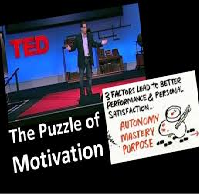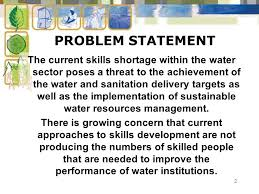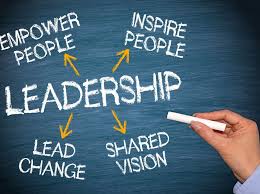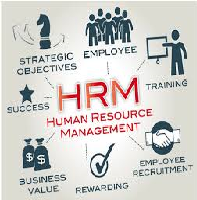HRM and Employee Performance Order Instructions: This week the writer will be submitting a high-level summary of potential research topics of which will be submitted to the Instructor, who will reply with feedback and suggestions for you to integrate into your work.

The writer should take note that the high level summary topics will fall under the scope of “Effects of Human Resource practices on employee performance”. With this in mind the writer will chose a topic around that main topic which is also the topic the owner of the paper is working on for his final paper.
It is very important for the writer to understand that this will be an ongoing paper and for this week he/she will only be submitting a high level-level summary of 1-page word document of potential topics. The information below is just to guide the writer to understand what will be expected of the paper later next week when he begins written the paper base on the topic that the writer will be chosen this week and presenting in the summary mentioned above. It is also important for the writer to take into consideration that for the topic for the doctoral study will be “Effects of Human Resource practices on employee performance”. With this in mind the writer will be able to select potential research topics as noted above in the first paragraph of this order form.
This is just for the writer to have an idea of what is expected next so as to know how to make the chose for the topic as the information below will be use to complete the paper of which the topic will be chosen this week. so please let the writer pay attention to details here before composing the detailed summary. The writer must also include in-text citations and reference
Final Paper:
Write a 15-page paper that addresses relevant theories and empirical research, leading to a significant research topic, problem, and research question(s). For your chosen research topic, provide an academic argument for funding that might support a vital new step in improving project portfolio performance and organizational effectiveness. You do not have to actually design a study to the point of specifying research measures of effective project management or specifying samples. However, try to evolve your thinking to the point of framing a relevant research topic, problem, and question(s) on which your proposed research would be focused.
Your question(s) should be complete enough to suggest the development of an important theory, address a gap in a current model, or demonstrate an immediate application for solving common organizational problems. Rather than attempting to include as many references as possible, try to emphasize the logical coherence of your evidence of conceptual foundations. Build an academic argument for why your research problem and question(s) are important. An obvious extension of your paper would be to use it as a springboard for a doctoral proposal. Your paper could also be useful in the development of Chapter 2 of your Proposal and Doctoral Study Completion.
Your Final Paper should adhere to APA format (6th edition), which requires a title, a reference list, and appropriate sections and their headings; and it should include the following elements:
• A thorough review of the literature (minimum of 20 resources, with 85% being 5 or less years old) that shows evidence of a potential research opportunity/gap that has not been discussed in the academic literature.
• A draft problem statement. Include the four parts of the draft problem statement below
The four parts of the problem statement are:
• Hook (with a peer-reviewed citation that is 5 or less years old)
• Anchor (includes a number supported with a peer-reviewed citation that is 5 or less years old)
• General business problem
• Specific business problem to be researched
• At least one broad research question that is demonstrably linked to your problem statement.
You do not need to address any hypotheses or design considerations.
HRM and Employee Performance Sample Answer
HRM and Employee Performance
Literature review
Fatima, Shafique, Qadeer & Ahmad (2015) start by arguing that employee performance is increased by the application of HRM practices in organizations. The authors argue that the increase in performance is due to the increase in job satisfaction. HRM practices such as training make employees replenish their skills. Ijigu (2015) add that HRM practices increase the motivation of employees. HRM practice such as compensation increases employee motivation because it provides them a reason to work harder. However, Mitchell, Obeidat & Bray (2013 argue that HRM practices continue to reduce the performance of the employee. This is because practice such as training is costly. Therefore, an organization will make the employee work extra to compensate the cost of training. This will ultimately result to decrease in employee performance, as workers will have unfavorable workplace (McClean & Collins, 011).
HRM and Employee Performance Problem Statement
Hook
For the years, the effects of HRM practices on employee have been a contentious issue. Some of the authors argue that HRM practices decrease the performance of the employees (Núñez-Cacho Utrilla, Angel Grande & Lorenzo, 2015). However, other authors argue that HRM practices make the performance of an employee to go up. Therefore, the research will try to find out if HRM practices increase employee performance or not.
Anchor
- Selection is positively related to employee performance
- Training is positively correlated to employee performance
- Compensation is positively correlated to employee performance (Ijigu, 2015)
- Career planning is positively correlated to employee performance
General business problem
The effects of HRM practices on employee performance
Specific business problem
The positive effects of HRM practices on employee performance
Research question
The importance of HRM practices on employee performance in an organization
HRM and Employee Performance References
Fatima, M., Shafique, M., Qadeer, F., & Ahmad, R. (2015). HR Practices and Employee Performance Relationship in Higher Education: Mediating Role of Job Embeddedness, Perceived Organizational Support and Trust. Pakistan Journal Of Statistics & Operation Research, 11(3), 421-439.
Ijigu, A. W. (2015). The Effect of Selected Human Resource Management Practices on Employees’ Job Satisfaction in Ethiopian Public Banks. EMAJ: Emerging Markets Journal, 5(1), 1-16. doi:10.5195/emaj.2015.64
McClean, E., & Collins, C. J. (2011). High-commitment HR practices, employee effort, and firm performance: Investigating the effects of HR practices across employee groups within professional services firms. Human Resource Management, 50(3), 341-363. doi:10.1002/hrm.20429
Mitchell, R., Obeidat, S., & Bray, M. (2013). The Effect of Strategic Human Resource Management on Organizational Performance: The Mediating Role of High- Performance Human Resource Practices. Human Resource Management, 52(6), 899- 921. doi:10.1002/hrm.21587
Núñez-Cacho Utrilla, P., Angel Grande, F., & Lorenzo, D. (2015). The effects of coaching in employees and organizational performance: The Spanish Case. Intangible Capital, 11(2), 166-189. doi:10.3926/ic.586
Performance appraisal as a tool for achieving high-level efficiency and productivity by employees in a firm
Performance appraisal is a human resources management approach intended to increase productivity in an organization (Montather 2014). Managers monitor every employee, unit, and department with an aim rewarding. Statement of the problem that arises from performance appraisal is: lack of policies, control mechanisms, and procedures for performance appraisal in the service industry and no solid measures already put in place to evaluate trained employees.
The objective of the research will be to examine how performance appraisal affects productivity and organization’s goal achievement; and how employees react differently to performance appraisal techniques.
Impact of motivation on employee productivity
Employees are motivated differently, and it takes human resource initiatives to ensure all workers are motivated. When employees are motivated, their performance is high and leads to the fulfillment of organization objectives (Nitin and Boris 2010). Through motivation, it is possible for HR managers to find employee motives for work and come up with ways to improvise. The problem that leads to doing the research is high-employee turnover in public sector industry.
The research is intended to examine effects motivation has on employee productivity in the service industry.
Staff training and development as a tool for employee performance
Training is essentially done to help members of an organization get equipped with knowledge, skills, and attitude needed for effective organizational performance (Carter 2011). Training and development are critical as it forms the benchmark for assessing overall organizational performance and competitive edge. The problem that necessitates this research is the low-performance level in the service industry; banks.
The objective of the research is to examine how staff development acts as a tool for improving organizational performance.
HRM and Employee Performance References
Asraful Alam (2013). Impact of human resources practices on employee performance http://papers.ssrn.com/sol3/papers.cfm?abstract_id=2570704
Carter (2011). Employee training and development: Reasons and benefits. Retrieved from http://managementhelp.org/training/basics/reasons-for-training.htm
Jansen (20120. The impact of human resource management on employee well-being. Retrieved from http://onlinelibrary.wiley.com/doi/10.1111/1748-8583.12000/abstract
Montather (2014). HRM: Performance appraisal methods. Retrieved from https://www.linkedin.com/pulse/20141030184448-208256548-hrm-performance-appraisal-methods
Nitin and Boris (2010). Motivation: A powerful new model. Retrieved fromhttps://hbr.org/2008/07/employee-motivation-a-powerful-new-model












